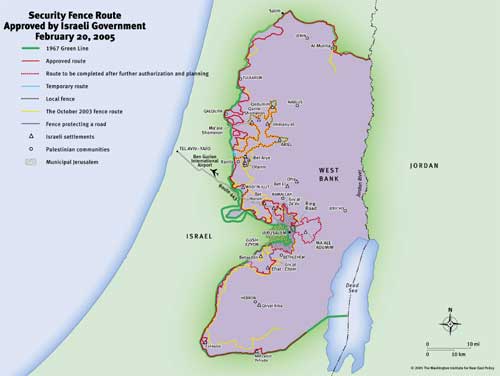In March, 2005, Israeli government minister Yuli Edelstein made a seminal appearance at the Alon Shvut community center in Gush Etzion in which he assessed that the February 20, 2005 retreat decision of the Israeli government did not only apply to Katif and to four small Jewish communities in Samaria.
Instead, Edelstein warned that the Israeli government decision was to redraw the areas of Jewish residency in the almost all areas that Israel acquired in the 1967 war.
The new map approved by the Israeli government, was immediately posted on the web site of the Washington Institute for Near East Policy, and is posted there to this day for all American government officials to peruse.
That Israeli government approved retreat map means that an additional 63 Jewish communities can be expelled and dismantled in their entirety by an Israeli government decision that has already been made.
Jewish communities slated for destruction under this Israeli government decision are spread throughout Samaria, Judea, Hebron and the entire Jordan Valley, demarcated on the National Geographic Atlas as parts of the “west bank”, alluding to the west bank of the Jordan River

Click here to enlarge Map.
The Israeli government approved retreat map remains a total secret in Israel. It has never been posted or discussed in the Israeli public domain – not in the media, not in the Knesset and not in the current Israeli government.
Rumors abound that Israel is about to order the IDF to implement the next stages of the February 20, 2005 Israel government retreat decision, beginning with small outposts, leaving most people under the assumption that the government of Israel does not intend to destroy any more than a few hill top communities.
However, the February 20th, 2005 retreat decision empowers the Israeli Security Establishment to implement surrender almost all of Samaria, Judea, Hebron and the entire Jordan Valley to an entity which remains in a state of war with the state and Israel.
The question remains: What can be done to engender a public debate over the February 20, 2005 Israel government retreat decision, a decision which is still in effect.
One of the foci of that public debate would be whether the Israeli government should scrap that s retreat map which continues to feature on the web site of the Washington Institute for Near East Policy for the world to see and which the movers and shakers of Israel have never even seen – let alone discussed.









